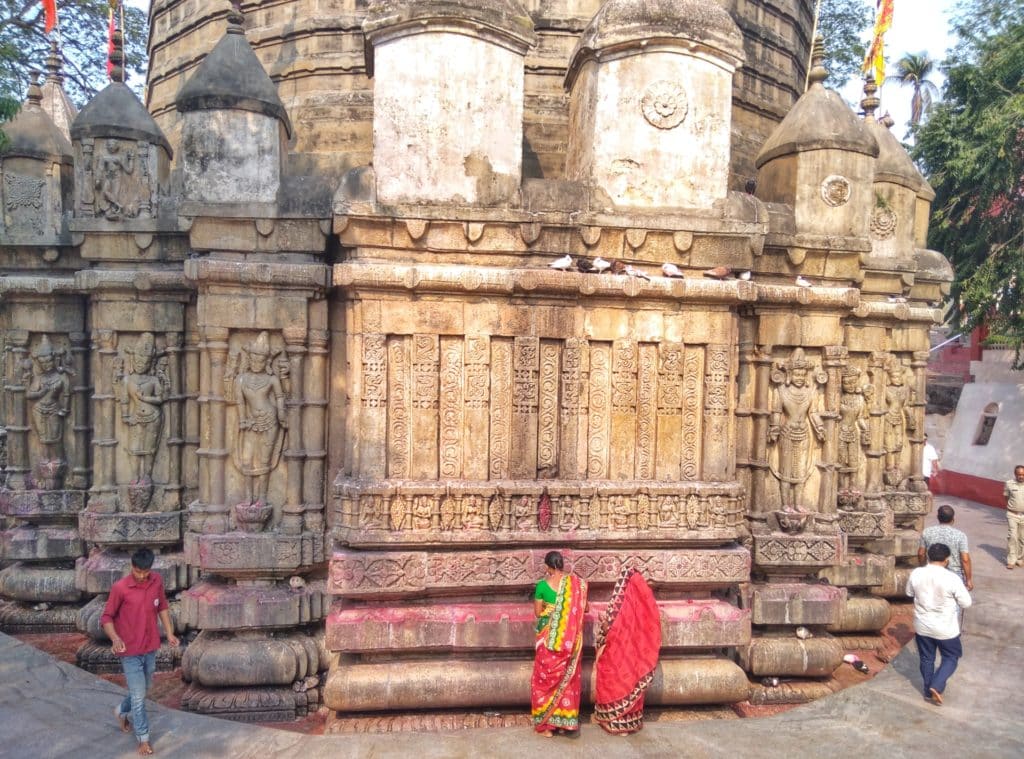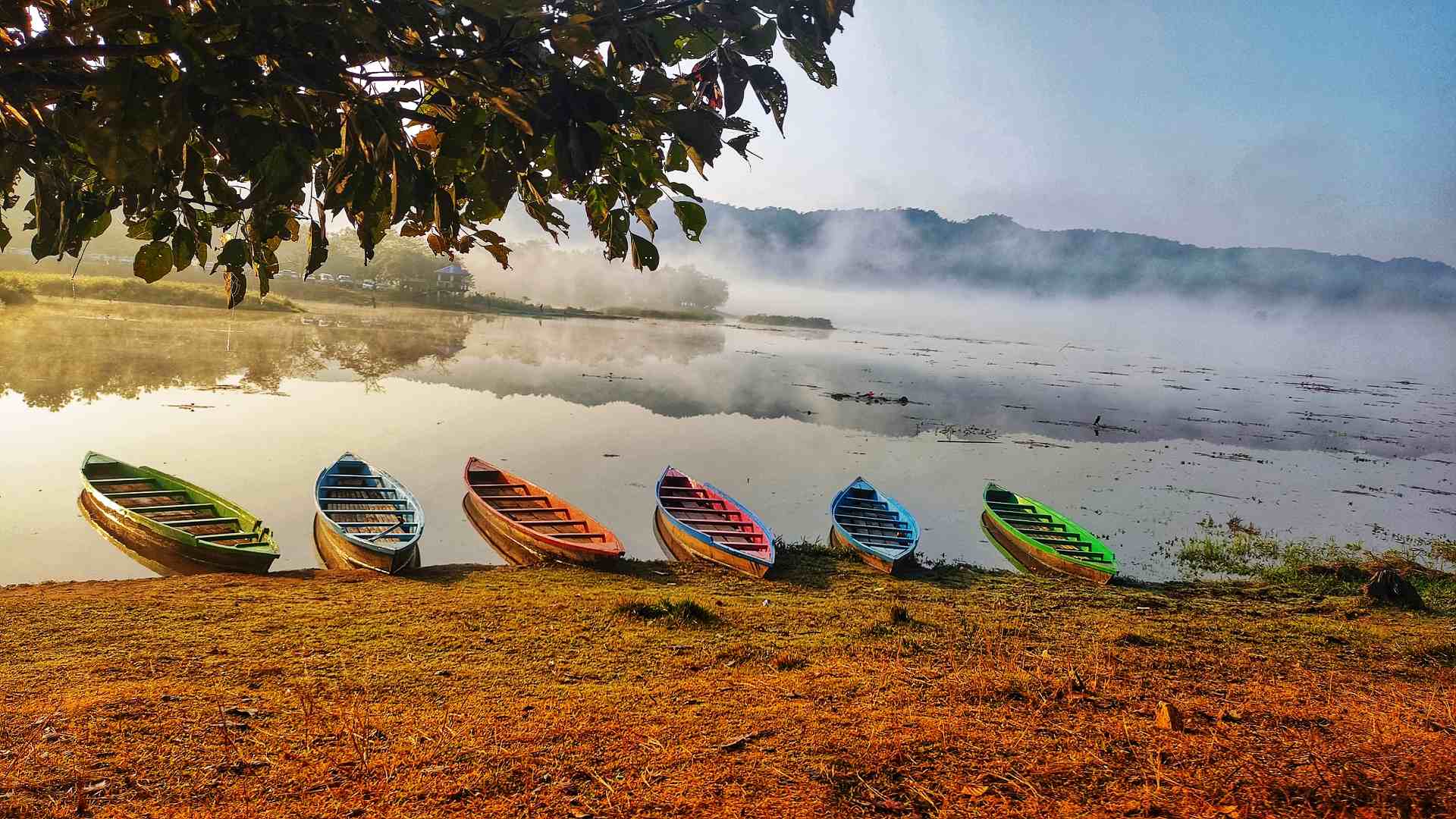Guwahati isn’t just the destination for some great arts and culture festivals, such as Bloomverse, it’s also the gateway to north-east India. While it may not exactly be considered a tourist hub, there’s plenty to see and do in the city. If you’re visiting for an event or transiting through, we recommend staying for a few days to make the most of your time in a place filled with rich history, food and culture.
Know before you go
The weather
The period between March to early April is usually quite warm and dry in Assam. The rains arrive around mid-April and stay until September. Rainy days are usually cool and pleasant. However, heavy showers can also lead to floods. There will also be days without rain during this period, which will be hot and humid. The wildlife sanctuaries of Assam are shut during the rains. Both the rains as well as the heat subside by mid-October, which marks the start of the festive season. Autumn slowly gives way to winter and this period between late October to February is the most popular season for tourists.
Getting around
While city buses and auto rickshaws are available, cab hire apps like Uber and Ola work perfectly fine in Guwahati. If you’re alone, you can cut your costs by hiring two wheelers through Uber or the Rapido app.
What to see
In the local language, “Guwa” literally means “areca nuts”, which grow abundantly here. However, it is hard to ascertain the exact period when the name Guwahati came into prominence. The earliest use of this name can be traced back to early 13th-century records left behind by Turkic chroniclers. This area has always been a seat of power, as suggested by the presence of numerous ancient temples. Originally this kingdom was called Kamrup, which finds mention in the fourth-century Allahabad inscription of Samudragupta, and was later visited by Chinese explorer Xuanzang in the seventh century.
Note that the distances of various attractions mentioned below are from Paltan Bazar area, which is more or less the centre of the city, where the railway station is also located.
A Day In Guwahati
Start your day at Uzan Bazar (1.5 km from Paltan Bazar), one of the oldest localities in Guwahati, which is dotted with a number of vintage Assam-type houses with gabled roofs and open verandahs. Many of them have been converted into trendy cafes where you can have breakfast. Then, take a ferry ride to Umananda, a small river island that houses an ancient temple of the same name. As per local beliefs, this is where Shiva burnt Kamdev with his third eye. Later, Kamdev regained his form through penance and this is the origin of Assam’s ancient name “Kamrup”.
Upon returning from Umananda, have lunch at Tholgiri, which serves Assamese cuisine with authentic ingredients sourced from nearby villages. Here, you can also pick up local pickles and handicrafts as souvenirs. After your meal, proceed to one of the city’s newest attractions, the Mahabahu Brahmaputra Heritage Centre, housed in a colonial-era building. A cultural venue that educates people about the riverine heritage of the region, it opened towards the end of 2021. Be sure to check out the photo gallery as well as the repository of traditional handicrafts and weaves.
Also located close to Uzan Bazar is the Assam State Museum, which will provide you with a quick 101 on Assam’s history. Here, you can see many excavated relics, some dating back more than 1,500 years. End your day by catching the sunset on the Brahmaputra at any point along the river bank. However, for a more immersive experience, you can opt to hop on the Alfresco Grand, a ship-turned-restaurant that will take you on a short river cruise.
Heritage Hub
If you want a one-stop snapshot of Guwahati’s heritage and culture, head to Srimanta Sankaradeva Kalakshetra (10 km). Designed as a cultural space to showcase the diverse ethnic heritage of Assam, it houses several museums, auditoriums, gardens and galleries. If you’re lucky, you might chance upon some live folk or classical dance performances while you’re there.

Temple Run
Guwahati is home to many unique temples with eccentric origins. The most famous of these and the religious and spiritual hub of the region is the Kamakhya Temple (6 km). Others include the aforementioned Umananda Temple on the island of the same name and the Navagraha Temple dedicated to the nine celestial bodies (grahas), which is situated atop the Chitrachal Hill and offers a panoramic view of the river (3 km). You can also catch the Brahmaputra Ropeway (1.5 km) and visit north Guwahati. While present-day Guwahati is mostly located on the southern bank, the northern side used to be the seat of Pragjyotishpura, the ancient capital of Kamrup that was a centre of astrology. It is home to many temples such as the Aswaklanta Temple, Manikarneswar Temple, Dirgheswari Temple and Doul Govinda Temple.
Where to eat (and drink)
Michinga
This restaurant serves various thalis of the north-east states. The flagship is located in Uzan Bazar (1.5 km) and there’s also a branch in Six Mile (8 km).
Mising Kitchen
Located in Ganeshguri, Mising (6 km) is popular for its Assamese-style thali comprising rice, pork, fish, mashed potato and vegetables cooked with limited spices, along with “khar”, an alkaline preparation unique to the region.
The GTAC Tea Lounge
Learn about the tea heritage of Assam at this lounge operated by the Tea Auction Centre (6 km) where you can try some premium tea.
Where to sleep
There is no dearth of quality hotels in Guwahati. However, if you are looking for a more local experience, book a homestay where you can interact with local hosts and learn more about their culture. Here are a couple you can consider.
Blissful Eyrie
An affordable homestay, Blissful Eyre (9 km) is located on the hilly terrains on the edge of the city.
Matirr Ghor
A homestay located in Beltola, Matirr Ghor consists (7 km) of a mudhouse built on the terrace of a building, so as to provide the visitors the feeling of a traditional Assamese home in the concrete jungle.
Mezenga Backpackers
Those looking for budget stays can find a bed at this popular hostel, which is just 3 km from the city centre.
Jitaditya Narzary is a budget backpacker, cinephile, SEO nerd and content marketer…in that order. He runs the travel blog Travelling Slacker.




Share on